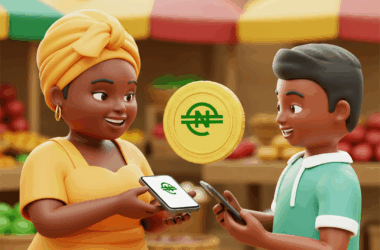
When a nation falls into crisis, the very foundations of its economy often crumble with it. Banks collapse, currencies lose value overnight, and international access becomes a luxury. Yet, money must still move. Families still need to send and receive support, and millions remain financially stranded without a lifeline. This is where decentralised finance and modern remittance tools begin to take on a critical role.
From borders to blockchains, a quiet financial revolution is unfolding in the shadows of war zones. As formal systems break down, people are not waiting for institutions to catch up. They are adapting in real time.
How Conflict Disrupts Traditional Remittance Systems
Traditional remittance systems depend heavily on centralised banks, licensed financial operators, and global money transfer networks. In times of peace, these channels may work; however, conflict exposes the fragility of some of these systems.
In Ukraine, the Russian invasion forced banks to close or limit withdrawals. In Gaza, entire aid pipelines were frozen due to banking restrictions. In Sudan and Congo, currency devaluation and regional violence made local banks inaccessible or untrustworthy. The result in each case was the same: families who depended on incoming support from abroad could no longer receive it through normal channels.
When banks become battlegrounds and local currency becomes paper, people begin to seek alternatives.
Decentralised Finance as a Lifeline in Crisis Zones
Decentralised finance (DeFi) has emerged as a tool of necessity, not luxury. It offers speed, flexibility, and most importantly, a level of independence from centralised authority. Stablecoins like USDT and USDC, for instance, are not tied to collapsing local currencies or vulnerable commercial banks. They function across borders and platforms, often accessible with only a mobile device and internet access.
In Iran, where international sanctions have long restricted access to global finance, freelancers and remote workers increasingly receive income in cryptocurrency. In Ukraine, the government itself accepted donations in Bitcoin and Ethereum during the early days of the war. For civilians, crypto became a method of payment and storage in the face of a failing banking infrastructure.
These adaptations are not happening in silos. They are connected by a growing awareness: when a crisis hits, digital finance can bridge the gap left by broken systems.
Real-World Examples: How People Adapt With Crypto
In the West Bank and Gaza, families facing restricted banking services have turned to informal crypto channels. Diaspora members send stablecoins, such as USDT, which are then exchanged for cash through community apps or trusted local agents. In Sudan, people displaced by violence use a mix of mobile money, airtime, and stablecoins to move value across invisible borders. In Congo, where banks are scarce outside urban centres, digital wallets now serve as both bank and safety net.
These are not fringe behaviours. They represent a global trend that is growing at a progressive scale across the Global South. Crises do not just force people to improvise; they reveal what is possible when traditional systems fail.

Why This Shift Is Accelerating Across Emerging Markets
Emerging economies, especially those frequently impacted by instability, are embracing decentralised solutions out of necessity. High fees, currency volatility, and rigid compliance laws have made traditional remittance options less attractive. When a family in Lagos, Nairobi, or Port-au-Prince needs to receive dollars quickly, delays and deductions are not tolerable.
New platforms are filling this gap, offering tools that simplify cross-border value transfer without requiring bank accounts or extensive paperwork. Some services now allow users to receive digital assets like USDT and convert them instantly into local currency. These platforms are not only faster; they are also offering fixed-rate guarantees, bonus rewards, and no middlemen.
One such service, Palremit, has gained attention among users across the Global South. By offering real-time crypto-to-cash conversion and flexible payout options, it reduces friction at the very point of need. For people navigating economic uncertainty, this kind of accessibility is not just a benefit; it is a financial anchor.
Crisis Does Not Just Break Banks, It Rewrites the Rules
There is a clear lesson running through every region touched by conflict: the failure of formal systems leads to informal innovation. Across war zones and sanctioned countries, people are proving that financial survival depends not on policy, but on access and adaptability.
Stablecoins, mobile wallets, and decentralised exchanges are not theoretical tools. They are real-world survival kits. With platforms like Palremit now simplifying how these tools are used, from peer-to-peer exchanges to instant payouts, the financial map of the Global South is redrawing itself without permission.
This is not a temporary workaround. It is a long-term shift.

Final Thoughts
The story of remittances in conflict is no longer just about who sends and who receives. It is about how systems break, how people respond, and how technology becomes an unexpected ally. Whether through stablecoins, peer networks, or fast platforms that offer reliable conversion, the future of remittances is being shaped not in boardrooms, but on the frontlines of crisis.
If you are navigating this new reality, whether to support loved ones or get paid in uncertain times, explore how Palremit can help. It is not just faster. It is built for times like these.









